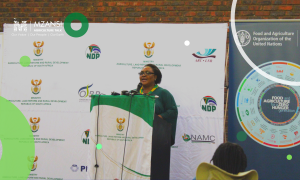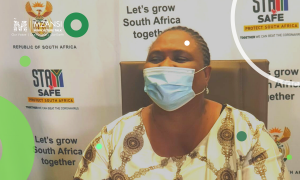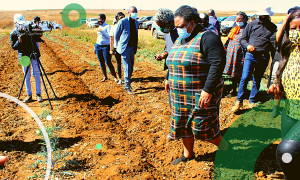In our recent trip into the hinterlands of the Northern Cape and North West, myself and one of our in-house policy gurus observed frustrations and sense of loss in most rural folks. One petrol attended named Antony made a startling remark in Afrikaans that caught us all off guard. “Apartheid has not left us Meneer, it has doubled,” he said.
This comment reminded me of a research paper presented by Andries du Toit of the Institute for Poverty, Land and Agrarian Studies (PLAAS). A friend of mine from the department of rural development had recommended me to read it two years ago, but I delayed my interest for good reasons.
PLAAS was an unwelcomed discussion for most officials at the department of rural development and land reform, and me being too forward tended to follow the loud noise (As I was heavily a devout FUSA man).
“You know Anthony is right, you should read PLAAS literature with a sense of an open mind as these guys have research stemming as far back as the 80’s warning off rural poverty,” said my fellow policy guru. Unwittingly, I revisited Andries du Toit;s piece titled ‘explaining the persistence of rural poverty in South Africa.’
We often do not connect the dots on the recent labour migration from rural to urban areas. During apartheid, labour migration was a forced activity to stop peasants from farming. After the turn of democracy, it seemed that the situation worsened. In 2012, the Africa Research Institute (AIR) said rural unemployment was twice the national average. Back then unemployment was 25% which stands to reason that rural unemployment was at 52%.
Today, unemployment according to Statistics SA stood at 32.5% and I shudder to think at what percentage rate it is for rural unemployment.
In seeking an answer to Anthony’s statement, it is at some level true that land reform programme drifted from pro-poor focus to an ‘established capitalist class of medium sized black farmers.’
To quote Du Toit: “This focus (land reform programme) has limited the impact of land reform and development policy, concentrating resources on the economic empowerment of a small group of 5000 or so aspiring medium-scale operators, while smallholder farmers reliant on family labour (approximately 250 000 people) and households practicing some form of subsistence agriculture (an estimated 2 million households) have been largely ignored”.
The logic of Du Toit’s piece has merit and does not exonerate apartheid but rather profess that the ruling party (African National Congress) continued with the apartheid line of ignoring rural people.
I have enjoyed many of government’s good stories tell, especially in agriculture but truly speaking, those catered for rural households I have not come across.
You read and watch in awe of other SADC countries where every rural household is given seedlings and other inputs annually to farm and sustain their rural economy. Elias Mawela from CCARDESA, once asked us this question; Where are your rural farmers, we never hear anything about them and their programs?”
This Freedom Day, as citizens, policy makers, urbanites, legislators, organised agriculture, investors, processors – how can we assist Anthony and the many of his rural folk, to unshackle the double apartheid they are experiencing?




















